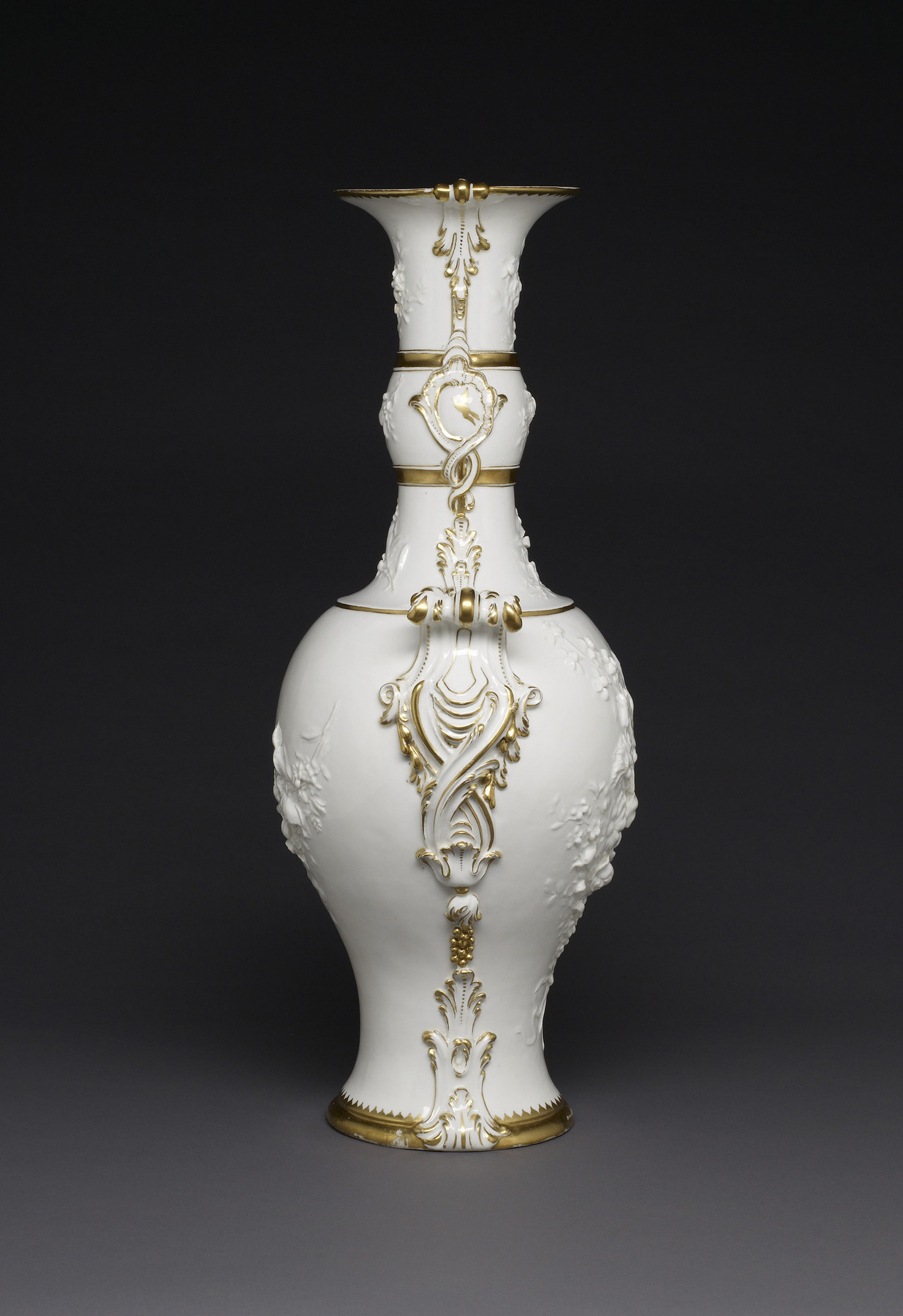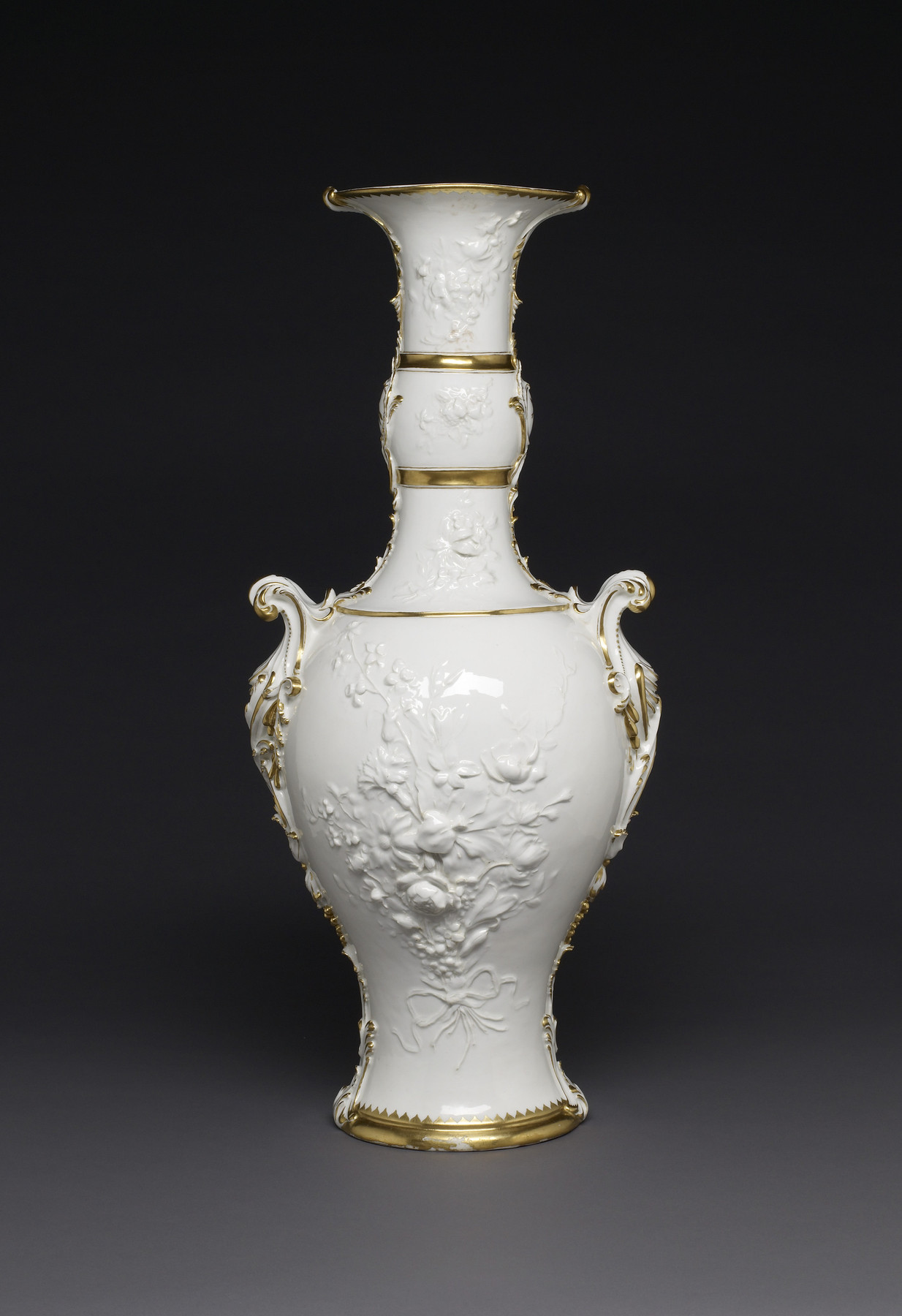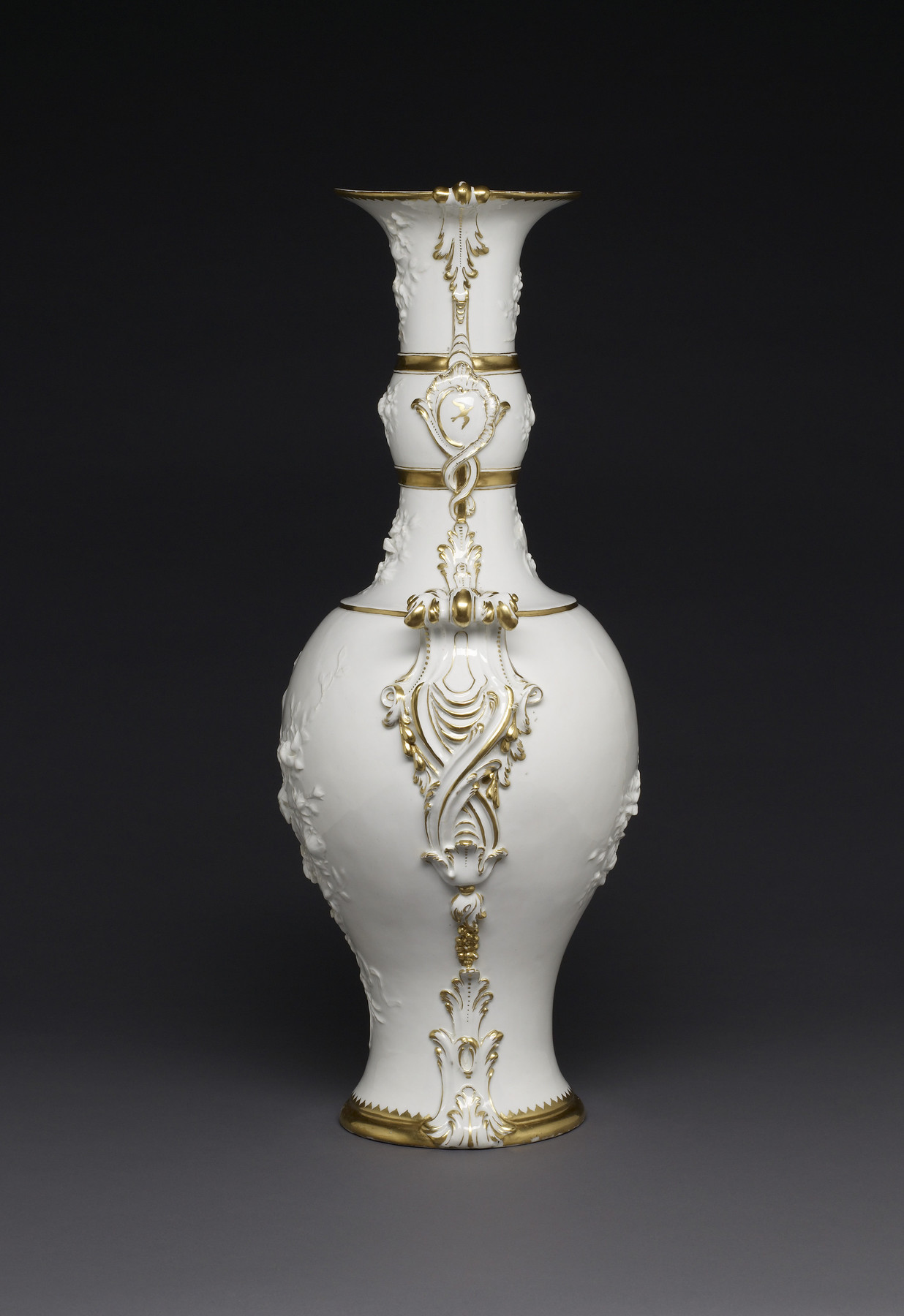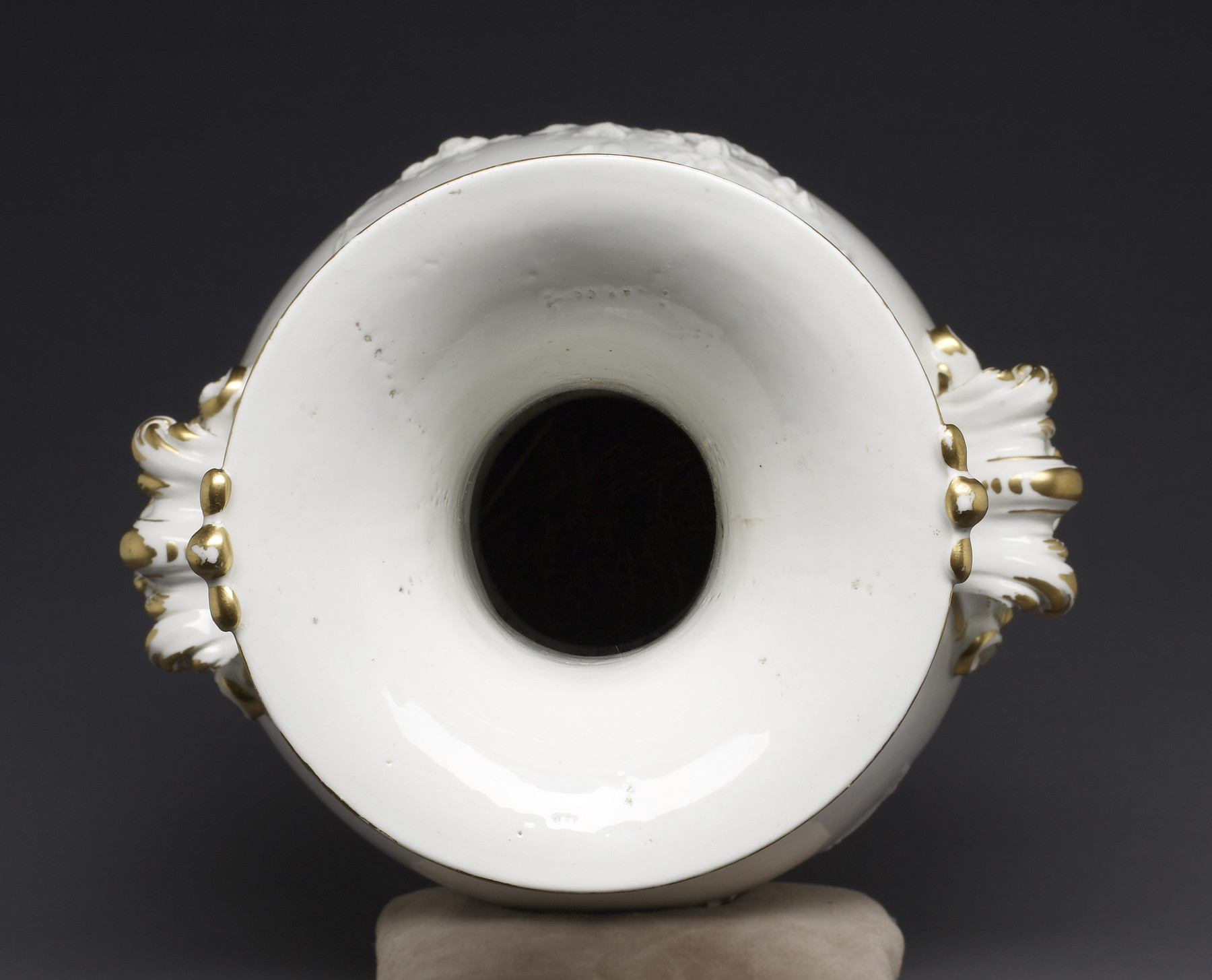High Jar
(18th and 19th Centuries )
During the 18th century, taking their cue from continental Europe, British factories started to copy rare and expensive imported wares from China and eventually developed their own unique styles. This jar represents the largest form produced by the Chelsea Porcelain Factory in London. Like some of the cups, coffee pots, and teapots made by the factory around this time, the vase is decorated with sprays of flowers molded in relief rather than painted on the surface. This technique was inspired by porcelain made at Te-Hua, China, and known as blanc de chine (literally “white of China” in French). The rococo molding shows the superb artistry of Nicholas Sprimont, the Huguenot silversmith who managed Chelsea throughout most of its operation. The jar is similar to one sold by Chelsea in 1755 described as: "A most magnificent HIGH JAR embossed with white flowers and gilt."
Inscription
Provenance
Provenance (from the French provenir, 'to come from/forth') is the chronology of the ownership, custody, or location of a historical object. Learn more about provenance at the Walters.
J. D. Gilbert; George R. Harding, London; purchased by Henry Walters, Baltimore, 1911; by bequest to Walters Art Museum, 1931.
Geographies
United Kingdom, England, London (Place of Origin)
Measurements
H: 24 3/16 × W: 11 13/16 × D: 9 1/16 in. (61.4 × 30 × 23 cm)
Credit Line
Acquired by Henry Walters, 1911
Location in Museum
Not on view
Accession Number
In libraries, galleries, museums, and archives, an accession number is a unique identifier assigned to each object in the collection.
In libraries, galleries, museums, and archives, an accession number is a unique identifier assigned to each object in the collection.
48.773














